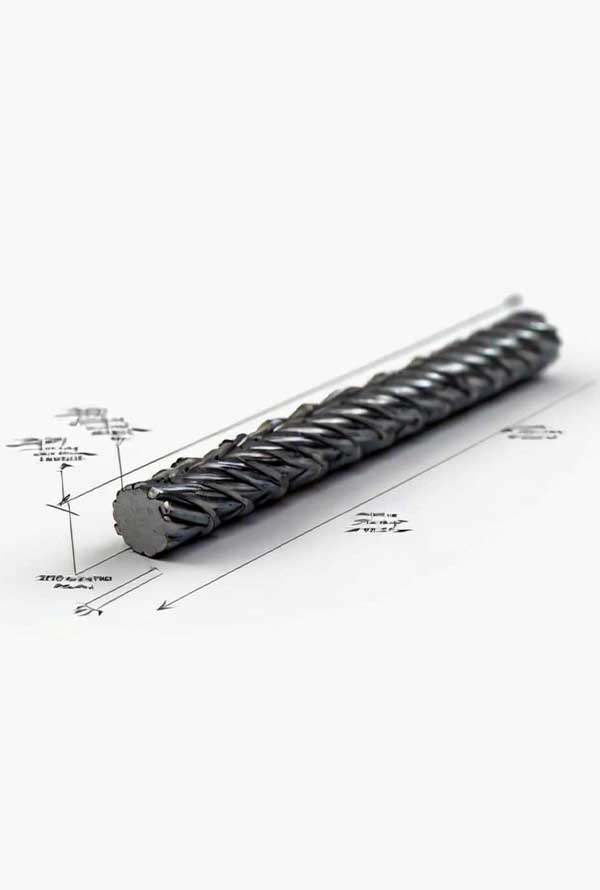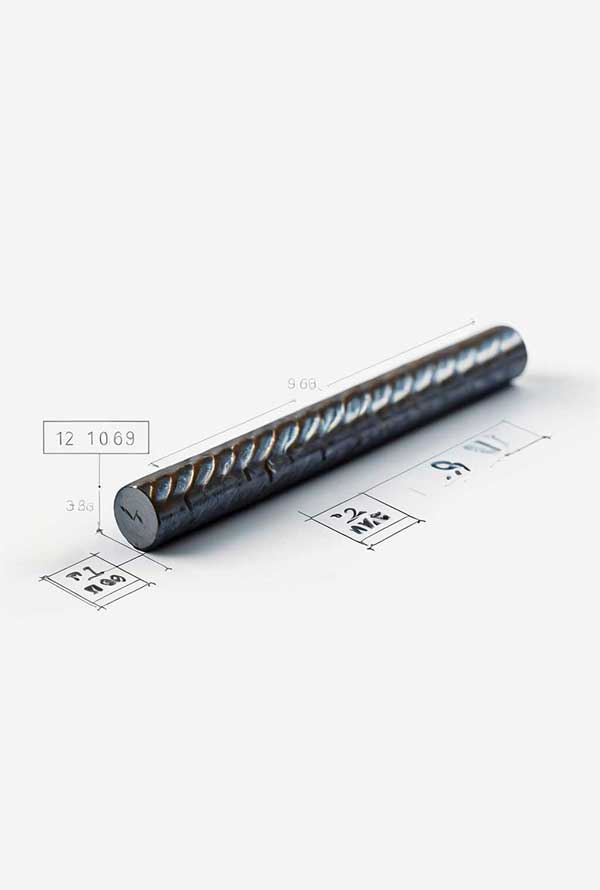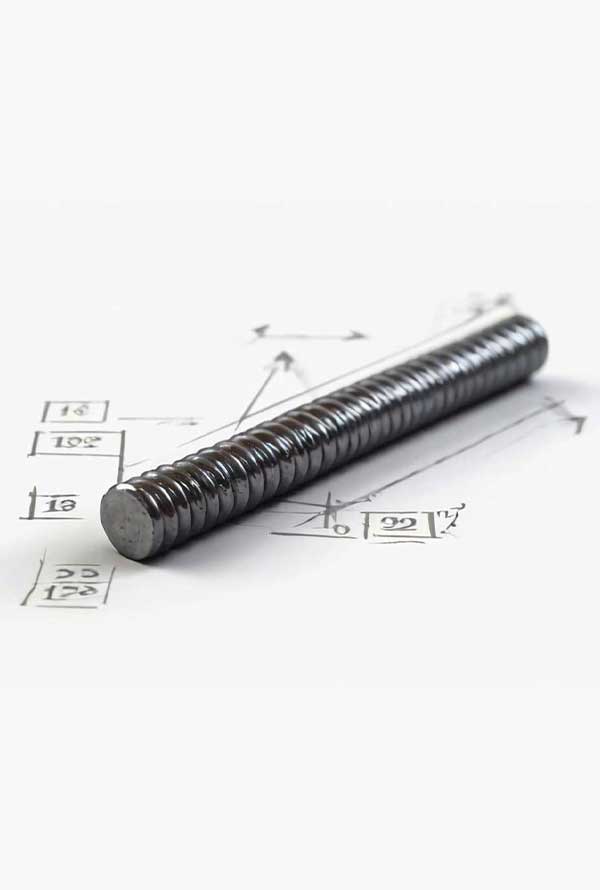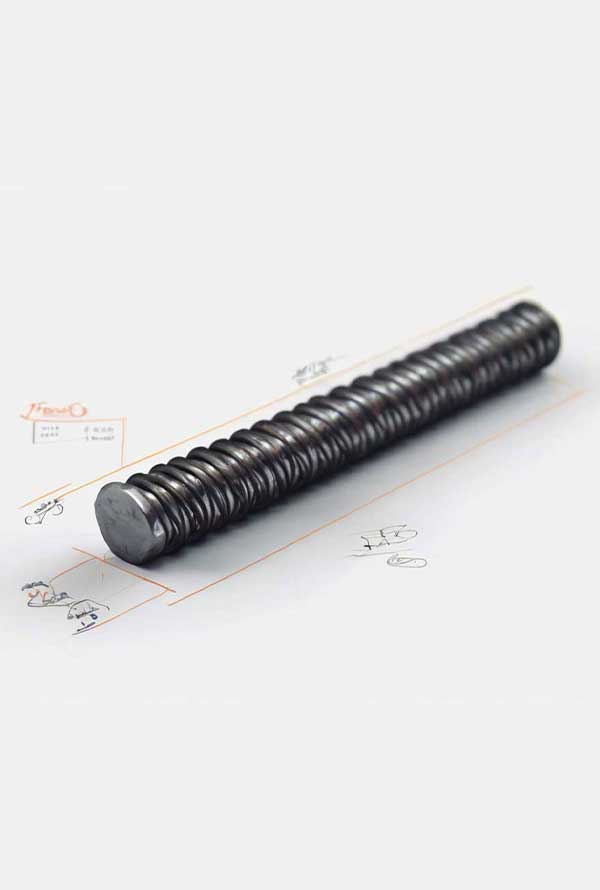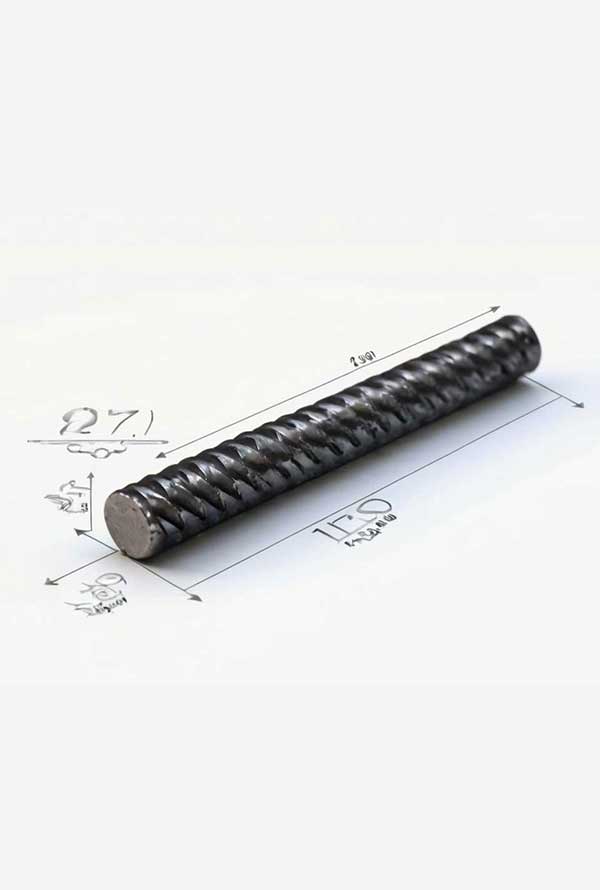Rebar 16, as one of the most widely used steel profiles in the construction and building industry, holds special importance. This product, with a diameter of 16 millimeters and desirable mechanical properties, is a fundamental element in reinforcing concrete and enhancing structural strength.
Technical Specifications of Rebar 16
This product, with a diameter of 16 millimeters and desirable mechanical properties such as high tensile strength, suitable ductility, and good adhesion to concrete, is used in a wide range of construction applications.
Technical Details
The technical specifications of size 16 rebar include various aspects. The production of this product in Iran is carried out according to national and international standards to ensure its quality and uniformity. Rebar 16 is typically produced from steel billets with a specific chemical composition designed to provide the final product with excellent tensile strength, yield, and ductility.
According to Stahle tables, the approximate weight of each meter of size 16 rebar is about 1.58 kilograms; therefore, the weight of a 12-meter rod of this rebar is approximately 18.96 kilograms. This product is usually produced in A3 grade, which is highly suitable for construction uses and signifies minimum specified tensile strength and yield strength. Finally, rebar 16 has ridges that enhance its adhesion to concrete, thereby increasing the structural tensile strength.
Weight Calculation of Rebar 16
To accurately calculate the weight of a size 16 rebar rod, various methods can be used:
- Using the Stahle Table: The Stahle table provides the unit weight of various rebar types based on their diameter and grade.
- Using a Formula: The weight of a rebar rod can be calculated using the following formula:
Weight = (Diameter × Diameter / 162) × Length × Density
In this formula, the diameter is in millimeters, the length is in meters, and the density is in kilograms per cubic meter.
Importance of Knowing the Weight of Size 16 Rebar
Knowing the exact weight of rebar is critical for structural calculations, cost estimation, and transportation. This information also helps engineers and contractors determine the precise amount of rebar required for a project.
Applications of Size 16 Rebar
Rebar 16, as one of the most commonly used steel profiles in construction, plays a central role in reinforcing structures and increasing their strength. Its desirable mechanical properties, including high tensile strength, suitable ductility, and good adhesion to concrete, have made it widely used in various construction applications.
Reinforcing Concrete Structures
Size 16 rebar is widely used in reinforcing concrete structures such as foundations, columns, beams, and slabs. These rebars distribute the stresses applied to the concrete, increasing the structural resistance to tensile, bending, and shear forces.
High-Rise and Multi-Story Buildings
In the construction of high-rise and multi-story buildings, using rebar 16 is of particular importance due to its high strength and ability to bear heavy loads. These rebars play an effective role in reinforcing the structure and increasing its stability.
Industrial Concrete Structures
In the construction of industrial structures such as warehouses, factories, and tanks, size 16 rebar is used as the primary reinforcing element. These rebars are highly suitable for these types of structures due to their high resistance to dynamic forces and corrosive environments.
Marine Concrete Structures
In constructing marine structures such as piers, breakwaters, and oil platforms, rebar 16 is used as one of the main components due to its resistance to corrosion and harsh environmental conditions.
Special Concrete Structures
In addition to the mentioned applications, size 16 rebar is also used in constructing special concrete structures such as tunnels, bridges, and dams.
Reasons for the Widespread Use of Rebar 16
There are several reasons for the widespread use of rebar 16. This type of rebar has very high tensile strength, allowing it to bear heavy loads. Additionally, its suitable ductility enables it to be bent and shaped as needed. Its good adhesion to concrete is another advantage; the ridges on the rebar’s surface enhance its adhesion to concrete, thereby increasing the structural strength. Finally, its affordable price compared to other steel profiles is another factor in its popularity.
Production Process of Rebar 16
The production process of size 16 rebar generally includes specific steps. Initially, steel billets, the raw material with defined chemical compositions, are prepared. These billets are then heated in special furnaces to very high temperatures to make them malleable.
In the next stage, the heated billets are passed through powerful rollers, gradually reducing their diameter and forming the final shape of the rebar. After hot rolling, the rebars are cooled and prepared for finishing operations such as cutting, ridging, and packaging. Throughout the production process, samples of the rebars are tested for mechanical, chemical, and dimensional properties to ensure the product’s quality.
Factors Affecting the Price of Rebar 16
- Quality Standards: The quality standards of rebar, including grade A3, directly affect its price. Rebars with higher standards usually have higher prices.
- Weight of Each Rod: The weight of each size 16 rebar rod can vary depending on the standard and production method. For example, the weight of rebar 16 from Foolad Sirjan Hadid may differ from that of another factory.
- Daily Price: The price of size 16 rebar fluctuates daily in the market, influenced by various factors such as exchange rates, production costs, and market supply and demand.
Mechanical Properties of Ribbed Rebar 16
The most important properties include:
- Yield Stress:
Yield stress refers to the maximum force that can be applied to the rebar without causing permanent deformation. For example, in ribbed rebars with 400 ridges, the yield stress is usually 400 megapascals. - Ultimate Tensile Strength:
Ultimate tensile strength refers to the maximum force a rebar can withstand before failure. For instance, the ultimate tensile strength of spiral ribbed rebars with 340 ridges is usually 500 megapascals. - Effect of Rib Type on Mechanical Properties:
Rib type significantly impacts the mechanical properties of rebar. Common rib types include:- Spiral Ribs: Provide increased adhesion and tensile strength.
- Chevron Ribs: Enhance adhesion and bending resistance.
- Composite Ribs: Combine the properties of spiral and chevron ribs for higher strength.
Comprehensive Guide to Buying Size 16 Rebar
Purchasing size 16 rebar, as a key component in the construction industry, requires attention to detail. To ensure you purchase a high-quality product suitable for your project, consider the following points:
- Define Exact Technical Specifications:
Determine the exact specifications of the rebar needed, including diameter (16 mm), length, and grade (e.g., A3, A2). Choose the rib type based on the required adhesion to concrete, ensuring compliance with national and international standards. - Check Product Quality:
Request a quality certificate from the seller, ensuring compliance with established standards. Inspect the rebar visually to ensure no defects like cracks, twists, or rust. - Consult with Experts:
If needed, consult with sales or steel engineers at Foolad Sirjan Hadid to select the best rebar for your project.
Conclusion
If you are looking for high-quality size 16 rebar at a reasonable price to reinforce your concrete structures, Foolad Sirjan Hadid offers products that meet national and international standards. Purchasing from this brand ensures quality, cost savings, and optimal project performance
